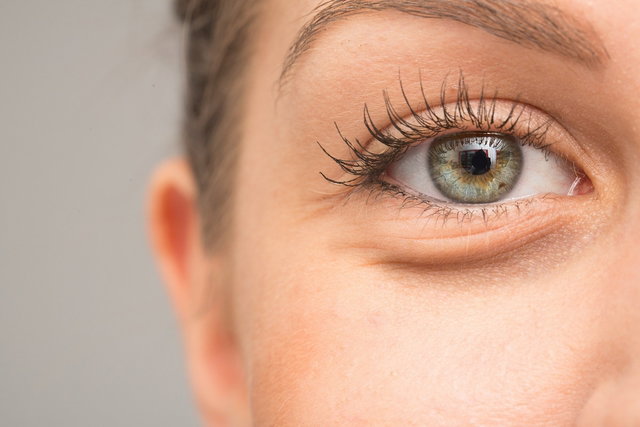To remove the bags that form under the eyes, there are some treatment options recommended by the dermatologist, such as moisturizing creams, intense pulsed light, carboxytherapy or chemical peeling, as they help to improve the circulation of blood vessels or stimulate collagen production, reducing swelling and combating sagging skin.
Bags under the eyes are generally caused by genetic factors, leading to the accumulation of fat in the lower eyelid, but it can also occur due to fluid retention that causes swelling of the eyelids or sagging and aging skin. Check out other causes of eye swelling.
In addition to the treatments recommended by the dermatologist, some homemade options can help improve the appearance and sagging of the skin or reduce the swelling of bags under the eyes, such as using cold compresses or increasing the consumption of foods rich in vitamin C, for example. In all cases, it is important to consult a dermatologist for an evaluation and recommendation of the most appropriate treatment.

The main treatment options for bags under the eyes are:
1. Lymphatic drainage
Lymphatic drainage helps to improve blood circulation and drain liquids and toxins to the lymph nodes, facilitating their elimination. In this way, it helps to reduce swelling and fluid retention that may be causing bags under the eyes.
Lymphatic drainage can be done with a professional beautician or even with daily home massages, placing the ring fingers on the lower eyelid, and sliding the fingers using light pressure, starting from the inner part under the eyes to the temples. Additionally, lymphatic drainage can be done across the entire face. Learn how to perform lymphatic drainage on your face.
2. Cosmetic products
Cosmetic products, such as creams, ointments or gels, can be useful in helping to treat bags under the eyes, as they may contain moisturizing properties, which increase the elasticity and smoothness of the skin, draining effects, which eliminate the accumulation of liquid in the local, in addition to helping to provide more firmness to the skin.
The products must be recommended by the dermatologist according to the characteristics of each person’s skin, and some options include products based on polypeptides, hyaluronic acid, green tea extracts, or oils, such as cottonseed oil or andiroba, for example.
See also cream options for dark circles and watch the following video to find out all the ways to eliminate them:
3. Intense pulsed light
Treatment with intense pulsed light is carried out in the dermatologist’s office, using a device that emits intense pulses of light with different wavelengths, applied directly to the skin of the bag under the eyes, to help improve blood vessel circulation. blood vessels and stimulate collagen production, reducing swelling and combating sagging skin, which may be causing bags. Check out other benefits of pulsed light.
Furthermore, the light used is converted into heat on the skin, which promotes the smoothing of marks, blemishes and imperfections, helping to disguise the affected area.
4. Chemical peel
Chemical peeling is performed by a dermatologist using acids that remove the outer layers of the skin, which helps to reduce sagging skin around the eyes, as well as reducing dark spots on the skin. Therefore, this procedure can soften the appearance of bags and may be useful in milder cases.
This type of treatment can cause redness, swelling, irritation, peeling or crusting of the skin, and the dermatologist may recommend some creams that help with skin healing. See all the care you should take after chemical peeling.
5. Carboxytherapy
Carboxytherapy is a treatment carried out by a dermatologist that consists of applying injections of carbon dioxide under the skin, which causes the vessels to dilate, improving blood flow in the region and stimulating collagen production.
In this way, sagging skin and expression marks are reduced, which makes this procedure useful for treating many cases of bags under the eyes. Find out more about the benefits of carboxytherapy and how it is done.
6. Laser de CO2
CO laser treatment2 is done by the dermatologist, applying the laser directly under the skin in the bag area, to help eliminate dead skin cells that cause the darkening of the bag under the eyes, in addition to helping to reduce sagging and imperfections in the area.
This type of treatment is generally indicated for cases of mild to moderate bags under the eyes. Check out the main indications for laser treatment on the face.
7. Hyaluronic acid filler
Filling with hyaluronic acid is an excellent treatment carried out by dermatologists to eliminate bags under the eyes, especially in cases where the bags are accentuated by grooves in the skin or the presence of sagging in the region. See how hyaluronic acid can fight wrinkles.
8. Radio frequency
Radiofrequency is a treatment carried out by a dermatologist that consists of applying heat waves to increase the temperature of the skin and muscles, promoting collagen contraction and favoring the production of more collagen and elastin fibers, giving more support and firmness to the skin.
Furthermore, the increase in temperature in the area of the bags under the eyes helps eliminate excess fat that may be causing the bags under the eyes. See other benefits of radiofrequency for the face.
9. Plastic surgery
Plastic surgery is performed by a plastic surgeon to remove excess fat under the lower eyelids to eliminate bags under the eyes, especially in more serious cases that cannot be resolved with other treatments.
In some cases, it may be associated with blepharoplasty, which is a plastic surgery that removes excess skin from the eyelids, in order to remove wrinkles that lead to a tired and aged appearance. See how blepharoplasty is performed and the results.
Home treatment options
Some home treatment options can help reduce the swelling of bags under the eyes and improve the appearance of the skin and include:
1. Cold compresses
Cold compresses are a good option to help reduce the swelling that may be causing bags under the eyes, as they promote the contraction of blood vessels in the skin, helping to eliminate excess fluids, relieving swelling.
To make a cold compress, you must place ice inside a plastic bag, and then wrap it in a clean, dry towel or cloth, to avoid getting too cold or causing skin burns due to the low temperature, and apply it to the area under the eyes. , leaving it to act for 5 to 10 minutes.
Another option is to use a cold spoon, previously placed in the freezer or refrigerator for about 5 minutes, and then apply it to the bag under the eyes.
2. Chamomile tea
Chamomile tea is a great natural treatment option for bags under the eyes, as this medicinal plant helps reduce swelling and rejuvenate the skin, as well as reducing dark circles.
To use chamomile tea, you must prepare an infusion by adding 1 tablespoon of dried chamomile flowers and leaves to 1 cup of water and bring to a boil. Then let it cool naturally and strain. Place the tea in the refrigerator until it is very cold, dip a clean, dry piece of cotton into the cold tea and apply it to the bags for about 15 minutes.
Another option is to use chamomile tea bags sold in supermarkets or health food stores, prepare the tea, let it cool and place the tea bags in the freezer. Then, apply chamomile tea bags to the bags under your eyes.
3. Vitamin C
Vitamin C is important to help increase the production and absorption of collagen, a protein responsible for ensuring firmness and elasticity to the skin, produced naturally by the body but which generally has its quantity reduced due to the natural aging of the body, which It can cause weakening of the muscles and ligaments under the eyes, leading to the appearance of bags.
Therefore, it is recommended to increase the consumption of foods rich in vitamin C, such as
orange, acerola, broccoli, yellow pepper or cashew, for example, to help reduce bags under the eyes. Check out the complete list of foods rich in vitamin C.
Watch the video with nutritionist Tatiana Zanin with tips on how to consume vitamin C to improve collagen production:

Sign up for our newsletter and stay up to date with exclusive news
that can transform your routine!
Warning: Undefined array key "title" in /home/storelat/public_html/wp-content/plugins/link-whisper-premium/templates/frontend/related-posts.php on line 12
Warning: Undefined array key "title_tag" in /home/storelat/public_html/wp-content/plugins/link-whisper-premium/templates/frontend/related-posts.php on line 13



